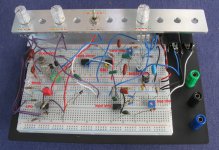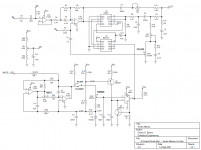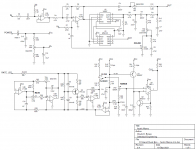Chuck D. Bones
Circuit Wizard
I wanted to build something using the recently acquired V3207D and MN3102 chips, so here's the first pedal out of the gate. It's a flanger based on the EHX Electric Mistress, with some updates and mods. I remember tracing an Electric Mistress back in '77. The design is both minimalist and clever. Unlike most clock oscillators, the one in the EM modulates the period of the clock rather that the frequency. That means that the pitch shift is constant across the entire sweep. The LFO in the EM was too clever for words. While it worked pretty well, it varied considerably from unit-to unit. I deployed a more traditional LFO, including clicking prevention. The freq range runs from 0.07Hz to 9.2Hz. At the low end of the speed range, it's a chorus. At the top end of the range, it sounds like a ring modulator. The tone is quite smooth, despite the minimal filtering. These V3207D's rock! I added a balance trim to achieve the deepest notches. I never had much use for the FILTER setting, but it does come in handy when adjusting the timmers. Next, I'm going to try a sinewave LFO to see how that sounds.






